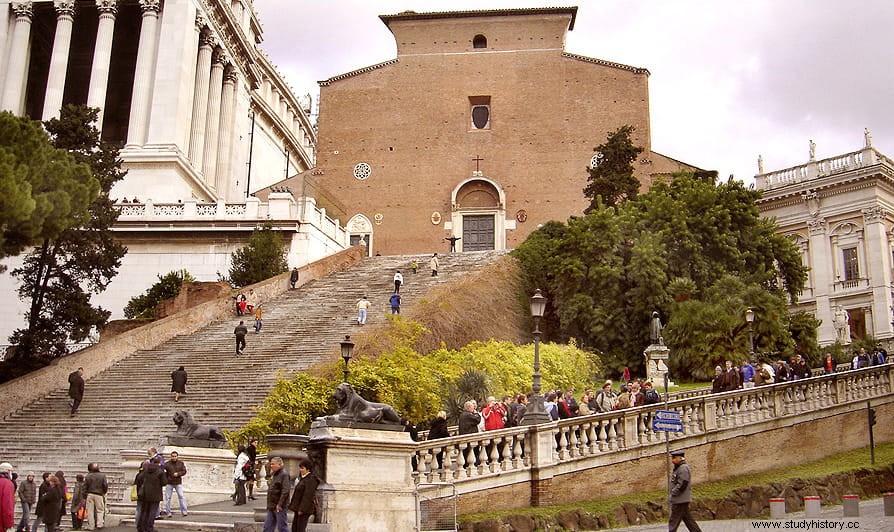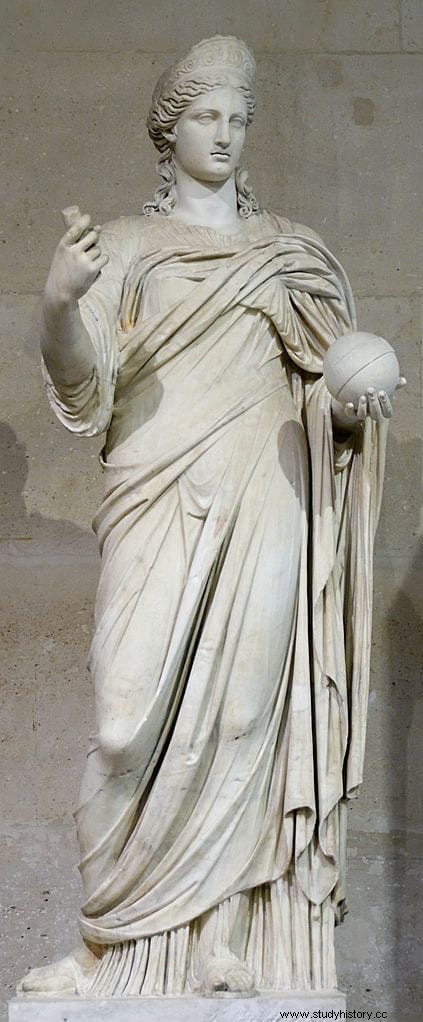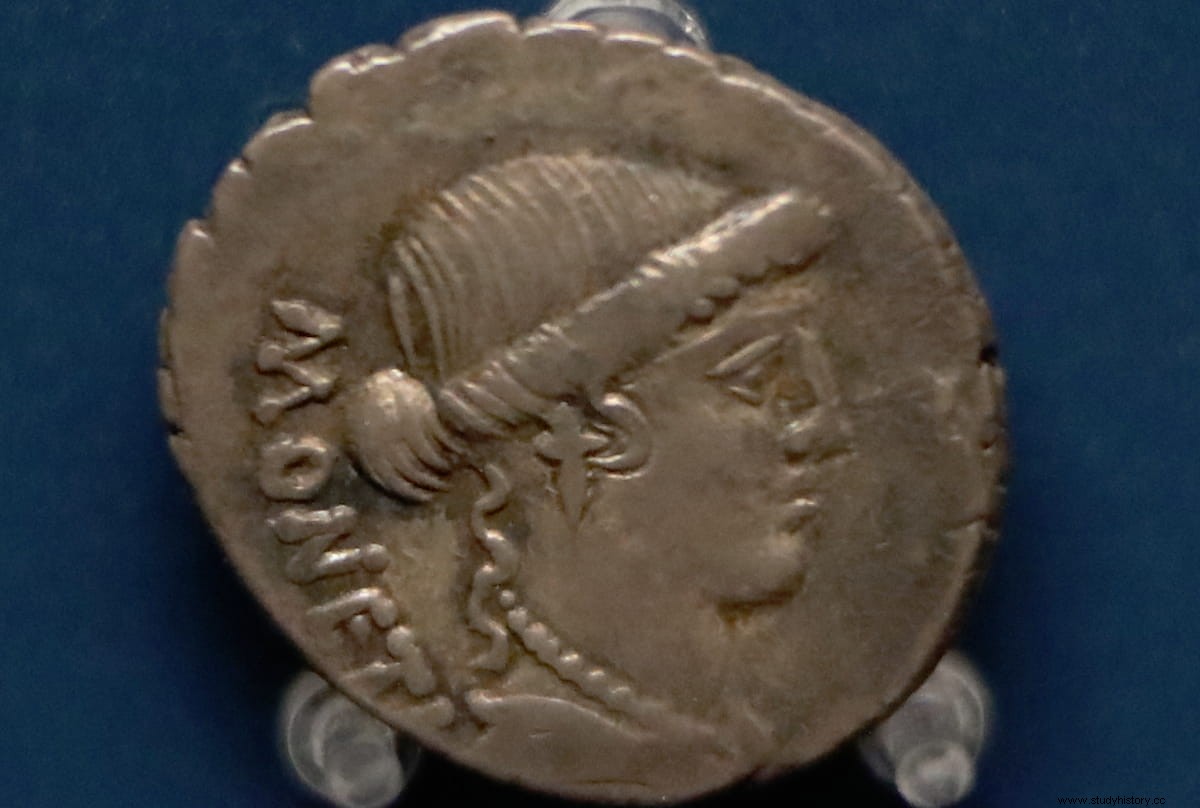It is likely that, during a visit to Rome, some reader has climbed to the top of the Capitol, one of the seven hills where the city was born. There is the famous Campidoglio square, presided over by the Town Hall with the famous pavement created by Michelangelo, the bronze statue of Marcus Aurelius on horseback and the Capitoline Museums, where the iconic Capitoline Wolf is kept. But in addition, it is not known if the Temple of Juno Moneta was located in the area that today is occupied by the church of Santa Maria in Aracoeli or in the stairway that goes up to the back of said building, next to which was the Roman mint. . It is easy to deduce that this is where the current word «currency comes from. «.
Coin It is a term that, with its respective variants, has been adopted by many languages, from Spanish to Russian, passing through English, thanks to its later diffusion in Romance languages and other ways such as morphological corruption:the Romans used to abbreviate the term in ment , which reached non-Latin-speaking countries through the classics when authors such as Ovid, Cicero, Martial or Juvenal wrote it in their works, originating the words money (money), mint (mint), monetary (monetary), etc. Along the same lines, the word “money » has its etymological origin in the name of the Roman silver coin denarius (denary).
The fact is that the Templum Iunonis Monetæ it had its importance, since in it, apart from minting Roman coins (until in the time of Domitian most of the workshops were transferred to the surroundings of the Colosseum), the archives of the magistracies were also kept; the Libri Lintei or official records, which owed their name (meaning "linen books") probably to the cloth worn by their custodians. The aforementioned church that stands today on the site was built remembering the ara coeli , the "altar of heaven" that, according to legend, Augustus had erected there after the sibyl predicted the arrival of Christianity.

And who exactly was Juno Moneta, more than one may wonder? To understand it, we must first explain that Juno, daughter of Saturn and Ops, sister and wife of Jupiter, and mother of Mars, Vulcan and Lucina, was one of the greatest divinities of the Roman pantheon, integrating the Capitoline Triad with the aforementioned Jupiter and the daughter that he had being born from his head after having devoured Metis, Minerva. It is important to point out that Roman mythology was nourished by both Greek and Etruscan mythology and, in fact, this triad derived from that of Etruria formed by Tinia, Uni and Menrva, leaving in the middle an archaic triad made up of Jupiter, Mars and Janus (who was later replaced by Quirinus).
As can be seen, the subject is much more complex than is usually believed and in the case of Juno it is aggravated by subdividing her figure into various aspects, as a goddess who was of the sky and light, as well as protector of conjugal fertility and her phases (courtship, marriage, pregnancy and childbirth), among other things. For each one he had his own name or epithet:Mater, Curitis, Lucina, Regina, Caelestis, Caprotina, Fluvia, Tutula, Februalis, Ossipagina, Pronuba, Pomona, Cinxia, Interduca, Dominuca... It is not clear if all of them were really applied to him. in the cult or some were only the work of the poets of the time. In any case, Moneta's was real.

And it is that Juno Moneta, as patron saint of the state, was in charge of protecting the riches of Rome, which we already saw that in the fiduciary version of her they were coined next to her temple; That is why the national mints are usually called Casa de la Moneda and that is why the coins used to carry the inscription SM, acronym for Sacra Moneta , before Diocletian's reform in the 3rd century AD. The goddess used to be represented accompanied by a scale and the horn of fortune, as well as minting tools (hammer, tongs, anvil...), an iconography that brought her closer to Vulcan, which is why both deities often appear associated.
Now, where does the epithet Moneta come from? There are two theories. According to the first, its etymology refers to the Latin term monēre , which has several meanings:remember, warn, instruct, teach... Juno Moneta would have warned the Romans, several times throughout her history, of enemy aggression against them. For example, Cicero says that the goddess, after warning of an earthquake, demanded the expiatory sacrifice of a javelin (the female of the wild boar, that is), in what is considered a link with the legend of the sacred geese that from the temple of Juno warned with their squawks of a Gallic invasion attempt in 390 BC.
However, today this approach is not accepted because it is known that there was already an extra-Roman cult of a divinity called Moneta who, when imported to Rome (a city that had no problem accepting other religions), was assimilated to Juno. Did this cult come from the Hellenic world? In the Suda Byzantine (an encyclopedia on history, literature and the origin of words written in the 10th century) the entry Μονήτα appears (Moneta) as the name of the aforementioned goddess and says that she was called that because the Romans prayed to Hera (the Greek Juno) when they needed funds during their war against Pyrrhus and she replied that they would not lack them if they resisted with justice; After the war, they honored her by calling her Hera Moneta, that is, her Counselor, from the Latin verb moneo ("Advise" or "warn"), and established the mint at her temple.
We said that there were two theories and the second also refers to the Greek, to moneres , which is translatable as unique or only . But it is that there was still an extra contribution to that Greco-Roman syncretism and it has its own name:Livio Andronicus, a writer born in Taranto (a Greek colony, located in the "heel" of the Italian peninsula, before its conquest by Rome in the aforementioned Wars Pyrrhic), who was born in 284 B.C. and must have been enslaved by the war approximately a decade later; but he was freed and adopted the name of his employer, becoming a teacher and writer in the capital of the republic.

Most of Andronicus's work has been lost, except for a hundred loose verses, and we only know of it through other authors. The one that interests us here is Odusia , the translation he made into Latin of the Odyssey ; she was the first to use saturnian verse (the oldest of Latin metrics, perhaps with Greek influence) and was also a pioneer in venturing into epics in that language, even before Gnaeus Nevio and his Bellum Poenicum . To do this, he did not hesitate to resort to archaic expressions to give greater solemnity and use the Roman names of the gods, although trying to maintain fidelity to the original of Homer. However, not all the verses are Saturnian and among those that take other forms is one that mentions Moneta.
«Nam diva Monetas filia docuit …”, that is, “Because the daughter of the goddess Moneta has said…” , serves Andronicus to equate that divinity with the Titaness Mnemosyne, daughter of Uranus and Gea, mother of the nine Muses, whom he had lying with Zeus for as many consecutive nights. She was the goddess of memory, hence in the Orphic rites the initiates drank from the river of Hades that bore her name, although she was also part of the cult of Asclepius. Another author who names it, in his work Theogony , is the poet Gaius Julius Hyginus (another freedman, in this case Hispanic, teacher of philosophy and director of the Palatine Library), who makes her descend from Jupiter and Clymene, although he is the only one of her.
Mnemosyne was assimilated into Roman mythology with Moneta, and Andronicus separated them literarily by referring to the former by the name of the latter, in his romanized translation of Homer. But the interesting thing is that the epithet Moneta was linked to Juno. Why? Because, although the historical records containing the Libri Lintei were kept in her temple on the Capitol -that is, the memory of Rome-, the mint was also located there, as we explained, and the concept would last at least until the Middle Ages.
